PS4 Pro vs PS4: what's the difference?
PS4 Pro or PS4? Which Sony console is the best for you?
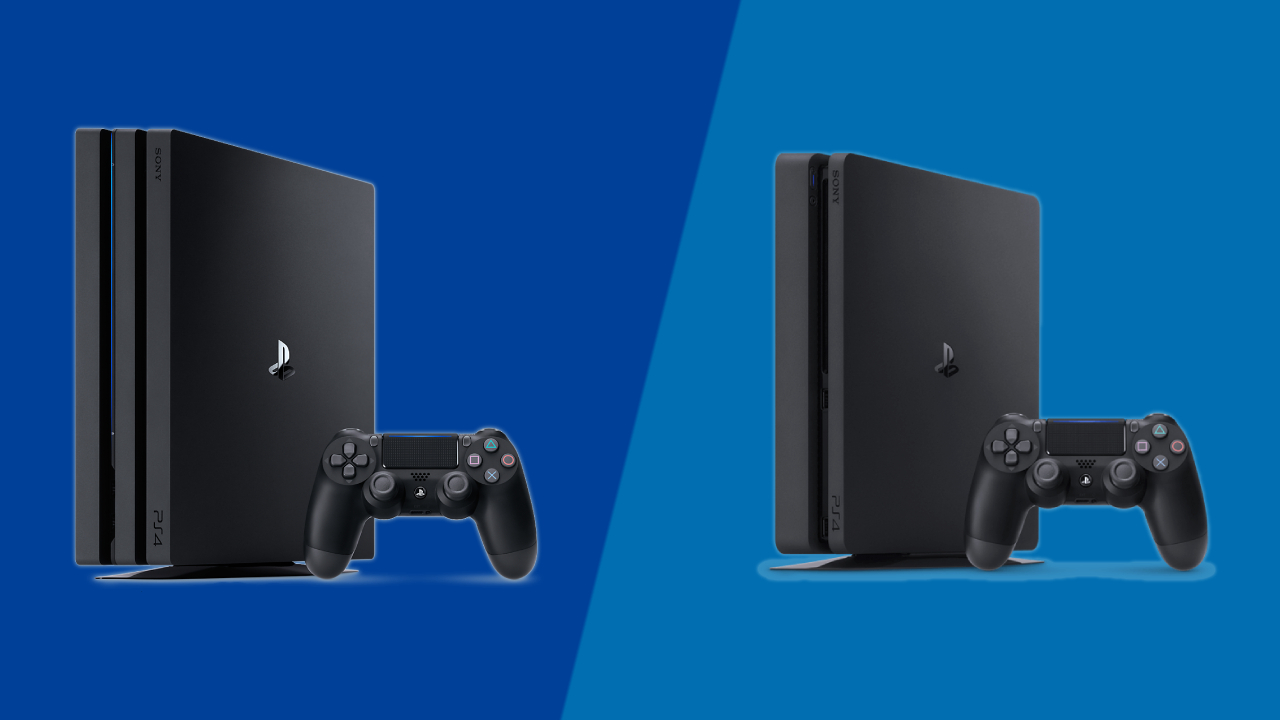
The question of PS4 Pro vs PS4 might come up if you're looking for a new console without moving straight on to the more recent PS5. Some people may still be weighing up whether they should go with the older PS4 model or pick the more powerful PS4 Pro as a cheap Sony setup.
Choosing between the two isn’t always easy. Just because one has the ‘Pro’ label doesn’t necessarily mean that it is the one you should buy - especially if you're not sure about the exact improvements that Sony made over the standard PS4. Both it and the PS4 Pro support the exact same library of games. The biggest difference between them is that the PS4 Pro is capable of playing games at a 4K resolution.
Let’s get one thing clear first, the PS4 Pro isn't as powerful as Sony's current-gen console, the PS5. If you want the best in power and performance, and you’re willing to pay a premium for it, get the PS5 as it’s backward compatible with almost every PS4 game. That said, the PS4 Pro is still a big improvement on the standard PS4, offering better performance and more advanced visuals than the standard console as a result.
With higher power hardware, however, comes a bigger price tag. Those with affordability in mind may not find the Pro upgrades enough to justify the increased cost. This means that your choice should come down to you and your priorities. So, is the mid-generation PS4 Pro the console for you? Would the standard version be a better fit? Or should you stop considering these two older consoles altogether and save up for the PS5 instead?
In this guide we'll look at several key factors that’ll help you choose, like the price, design, specs, graphics, PSVR performance, and other aspects to help make the best choice for you between the PS4 and PS4 Pro. We've also covered what you'll be getting from the newest console: the PS5, in case you'd rather go for the latest and greatest system instead.
PS4 vs PS4 Pro: price comparison
The Pro offers some obvious advantages over the original PS4, but there are several reasons to go for the latter, not least the lower price. Take a look at the list of current deals below, plucked from the web's top retailers.
Should you decide that a PS4 Pro is more up your alley, you're in for a treat –especially if you have a 4K HDR television to play it on. You'll find the lowest prices on Sony's PlayStation 4 Pro further down below.
Sign up for breaking news, reviews, opinion, top tech deals, and more.
Knowing the difference between the two PS4 models can make all the difference during sales, as you'll be able to spot a genuine bargain much more easily. Just keep in mind that PS4 Pro has been discontinued, making that tougher to find, while Sony’s continuing PS4 production into 2022.
PS4 vs PS4 Pro: key differences
One of the main differences when it comes to the PS4 vs PS4 Pro question is resolution: the original PS4 is limited to 1080p but the newer PS4 Pro can go as high as 2160p – or 4K, as it's more commonly known. However, games need to have been specifically updated to take advantage of the PS4 Pro – you can see a comprehensive list of older PS4 Pro enhanced games here.
Ultimately, it's up to game developers themselves to make the most of the more powerful PS4 Pro hardware. If there's no PS4 Pro mode in the game, then you can't get true 4K resolutions.
The good news is that since the Pro launched, all new PS4 games have to include a 'Pro Mode', enabling them to make the most of the Pro's enhanced hardware. It's also worth considering that even if an older game hasn't had a PS4 Pro patch, it's still probably going to run better on the more expensive console, which also applies to PS5.
Don't forget that in order to see 4K HDR graphics in all their glory on your PlayStation 4 Pro, you'll need a 4K HDR TV to match – an older 1080p screen won't see much of a benefit, apart from supersampling a generally more stable frame rate.
Should you buy a PS4 Pro and have a 4K TV on hand, however, prepare yourself for a feast for the eyes– games look great on the PS4 Pro. Textures in Spider-Man on PS4 Pro are significantly clearer than on the regular PS4, for example – Insomniac (the game's developer) has done a great job optimizing the game for PS4, but playing it on a Pro is the superior experience (check out the video we've embedded above).
For an example, check out the Death Stranding PS4 vs PS4 Pro comparison on YouTube below.
PS4 vs PS4 Pro: appearance

As far as physical looks go, the most obvious difference between the original PS4 and the PS4 Pro is the extra layer on top of the console. While the original PS4 has two layers separated by a gap for the disc drive and two USB ports, the PS4 Pro has three layers.
Thankfully this hasn't led to too much of an increase in its dimensions. The original PS4 measures 275.1 x 305.1 x 53.1 mm, while the Pro measures 295 x 327 x 55 mm. That means it's slightly bigger, it's 2 cm deeper and 2 cm wider, but interestingly it's more or less the same height.
It's also half a kilogram heavier, or just over a pound, though that shouldn't bother you too much unless you're regularly lugging it from one room to the next.
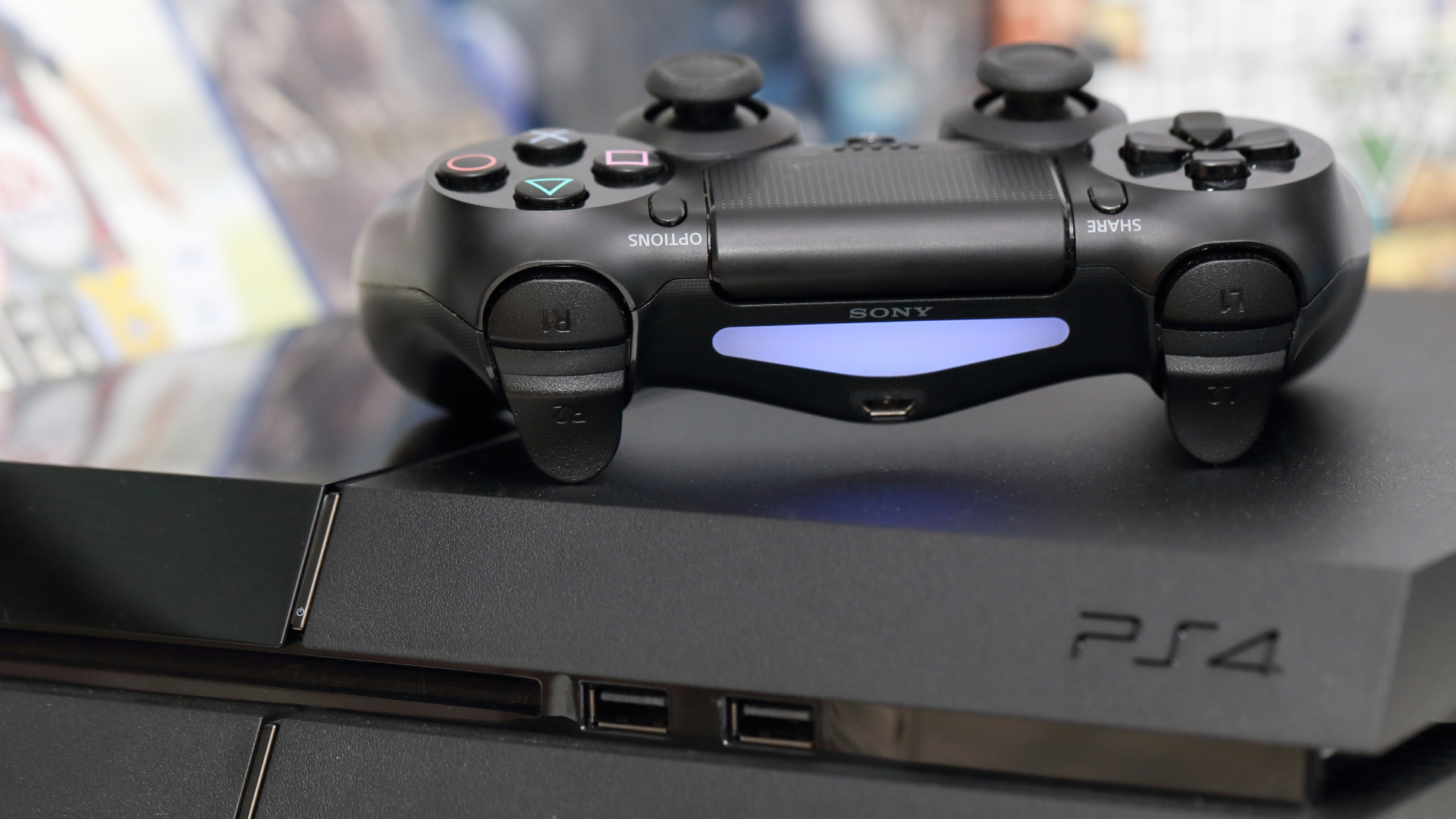
PS4 vs PS4 Pro: connections
In terms of rear connectors, the PS4 Pro is nearly identical to the standard PS4, aside from an extra USB 3.0 port – which should prove useful if you're hooking up a PlayStation VR since the headset takes up a USB port when it's plugged in.
An extra USB port is an excellent inclusion since the PSVR brings back the Move Controllers, which each need a USB port to charge. If you're planning a jump into virtual reality, then the PS4 Pro might be the way to go.
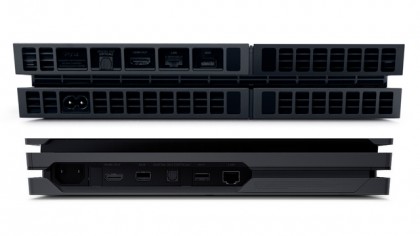
Unlike the slimmer PS4, the PS4 Pro does include an optical audio output on its rear, just like the original launch PS4 from 2013.
The final difference between the rear console ports is the HDMI port. While the standard PS4 has an HDMI 1.4 port, the PS4 Pro has an HDMI 2.0 port, allowing it to output at 4K resolutions (more on that later).
It's important to note that you don't need to upgrade your HDMI cable to take advantage of 4K, despite what Sony is claiming on its official FAQ. Any HDMI cable that can handle 1080p can do 4K just fine.
PS4 vs PS4 Pro: optical drive
This is a particularly sore spot for Sony's latest system. Despite initial speculation to the contrary, the PS4 Pro does not include an Ultra HD Blu-ray player – it can play Full HD 1080p Blu-ray discs, just like the original PS4.
Sony's decision to omit an Ultra-HD Blu-ray drive from the system is puzzling, considering that Blu-ray support was one of the PS3’s major boons. Now, Sony saved that for its latest console... but considering Microsoft's Xbox One S already has the high-end disc drive, it would've benefitted Sony to have launched the Pro with one too.
PS4 vs PS4 Pro: specs
The internals is where we see some of the key differences between these two PS4 models. Both consoles share an AMD Jaguar x86-64 8-core CPU, which has seen a 30% boost in clock speed from 1.6GHz to 2.1GHz based on its predecessor.
Meanwhile, the GPU has seen a much bigger performance increase on PS4 Pro. Its power has been doubled, and its clock speed has been boosted from 800MHz to 911MHz. In total, the GPU has jumped from 1.84 TFLOP in the launch PS4 to 4.2 TFLOP in the Pro. This bump is in order to accommodate the new 4K functionality.
The Wi-Fi of the Pro also saw an upgrade to include 802.11ac and a Bluetooth bump from v2.1 to v4.0. Both of these upgrades were also seen in the new slim PS4. The Pro also has an additional 1GB of DDR3 RAM, used for non-gaming apps to free up the faster GDDR5 RAM for gaming performance.
PS4 vs PS4 Pro: 4K TV performance
This is the big one – the main reason it's worth making the jump from the original hardware to the PS4 Pro. The PS4 Pro supports 4K output, as opposed to the standard PS4's Full HD 1080p resolution.
When it comes to streaming services such as Netflix this means that the console is able to play movies and TV shows in their maximum resolution – but unfortunately, the lack of an Ultra HD Blu-ray drive means that the console will not be able to play physical 4K media.
"The PS4 Pro supports 4K output, as opposed to the standard PS4's Full HD 1080p resolution."
Games are slightly more complicated because it's up to developers to decide how they want to use the PS4 Pro's extra muscle. We're seeing it bear more fruit now the jacked-up console has been on the market for a while.
In our God of War review, for example, we found the PS4 Pro version came with two separate graphics modes: one which favors a resolution, displaying the game at checkerboard 2160p (or 4K), and another which favors performance, lowering the resolution to 1080p but displaying at a frame rate that's closer to 60fps
The one you choose will obviously come down to your personal preference. Camera movement is much, much smoother in performance mode, though the drop in visual detail is noticeable — especially in-game, where the level of detail seen at 4K is so high.
Of course, HDR is also available for those with TVs that support the format, and we can say that it definitely adds to the experience, particularly when it comes to lighting and shadows.
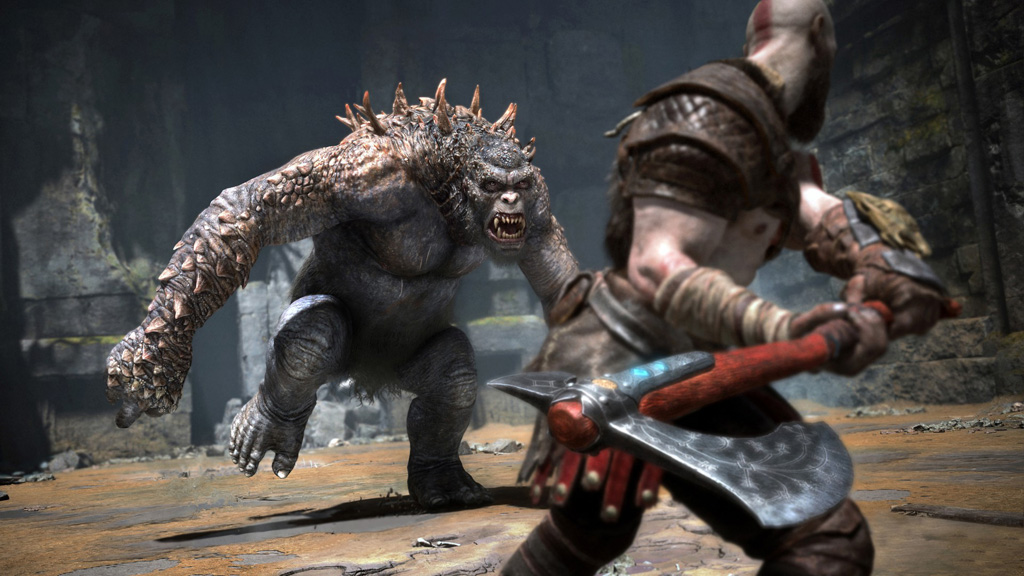
Other games such as Days Gone are upscaled to achieve a 4K output, but reports indicate that the upscaling process used is more clever than simply stretching the image over a larger number of pixels. Meanwhile, other games such as Deus Ex: Mankind Divided are said to upscale much less successfully.
The takeaway seems to be that achieving a good 4K performance will need developers to be clever about the balance they strike between native rendering resolution and the upscaling technologies used.
On something like Horizon Zero Dawn, the 4K HDR quality really stands out on the PS4 Pro – that's worth bearing in mind if you're picking between these two consoles during the holiday sales (or indeed at any other time of year). In summary: the PS4 Pro is not powerful enough to run a game at 4K with all the graphical bells and whistles turned on, but with some compromises, the results can be impressive.
Although HDR support is new with the PS4 Pro, this same functionality has arrived on launch PS4s via a firmware update. Check out our full guide to HDR for exactly what that means for how your games will look. As for loading times, the PS4 Pro offers a small improvement over the PS4. But if you're looking for a boost in loading times, you'll see greater improvement if you upgrade your PS4 with an SSD.
PS4 vs PS4 Pro: 1080p TV Performance

Although the PS4 Pro is meant mainly as an accompaniment to 4K televisions, the console will also give a graphical boost if you're playing on a 1080p screen. But while some of these enhancements are intentional, such as using supersampling to enhance the amount of detail in a given scene, others are not.
The Last Guardian, the much-delayed game from Team Ico, finally launched with numerous framerate issues that were present on both the PS4 at 1080p, and the PS4 Pro at 4K. But a performance analysis revealed that these issues almost completely disappear if you force the game to run in 1080p mode on a PS4 Pro by changing the system settings.
We don't think this is an intentional feature of the Pro, but if this trend continues in the future it might make the Pro a much more necessary upgrade for 1080p TV owners.
PS4 vs PS4 Pro: 'boost mode'
Introduced in PS4 firmware 4.50, 'boost mode' is a feature that allows PS4 games that haven't received a PS4 Pro patch to receive a performance boost when played on the new console. While the exact improvements aren't fully understood, a Digital Foundry analysis has unearthed performance boosts of as much as 38%.
Titles tested included Assassin's Creed: Unity, Battlefield 4, and Project Cars, all of which saw substantial performance increases when running on the Pro, despite not having a Pro patch available.
Check out the video above for a more in-depth outline of the benefits.
PS4 vs PS4 Pro: PlayStation VR
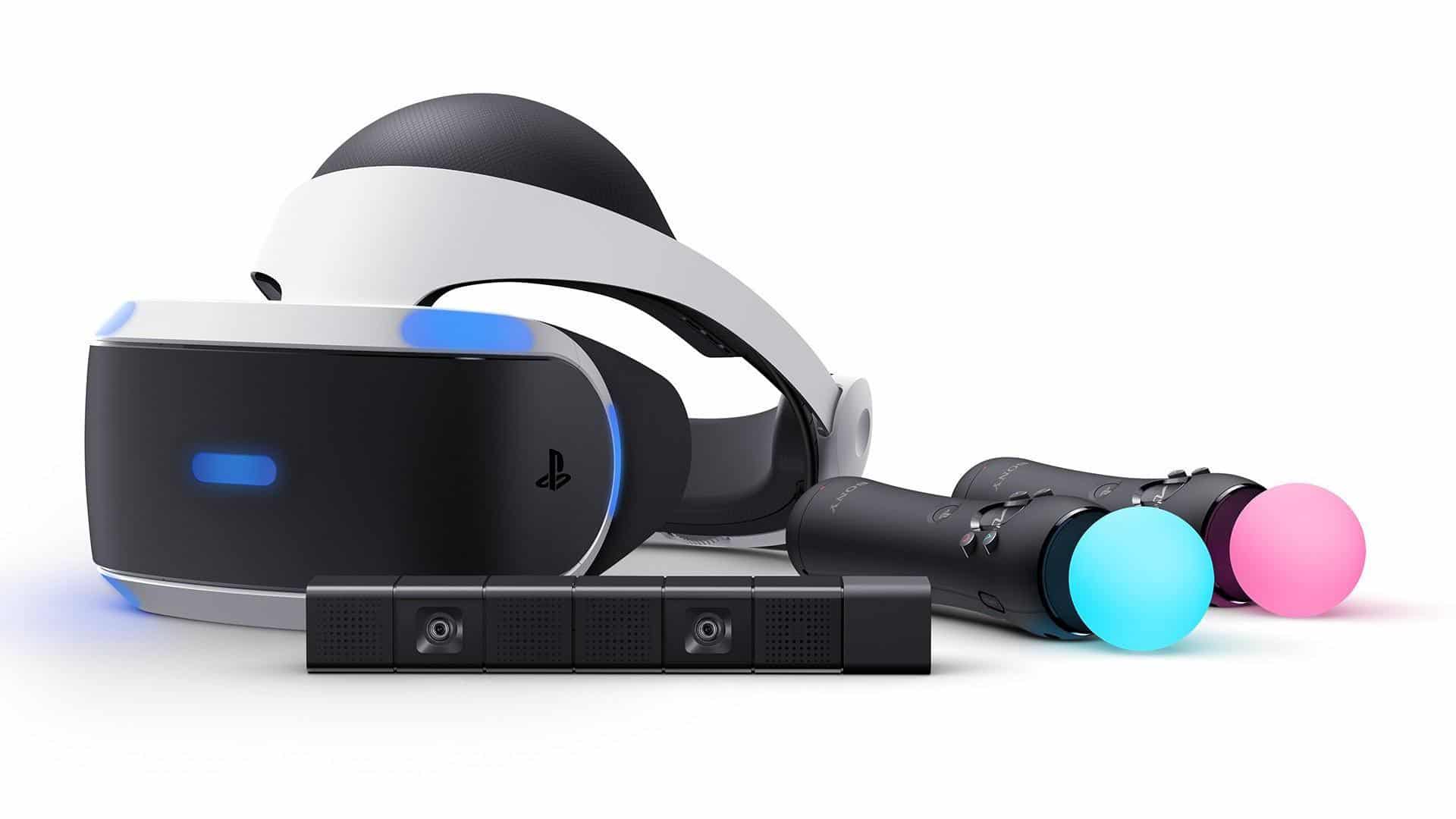
Although prior to the PlayStation VR's release there were rumors circulating that the headset's performance on launch consoles was going to be 'terrible', now that the hardware is out the distinction appears to be much more subtle.
In fact a recent analysis by Digital Foundry suggests that in some games the difference between PS4 and the PS4 Pro can be a struggle to find. Having the cheaper console doesn't mean you're locked out of VR. Other games appear sharper on the Pro because of how the developers enabled super-sampling techniques, effectively rendering games at a higher resolution to enhance detail levels.
In Robinson: The Journey for example, details are much crisper, and textures benefit from a higher level of texture filtering. The bottom line with the PlayStation VR is that the differences between the two consoles are too slight to conclusively recommend the Pro on the basis of VR performance alone.
If this changes in the future as developers get better acquainted with the PS4 Pro then this may change, and we'll update our thoughts accordingly.
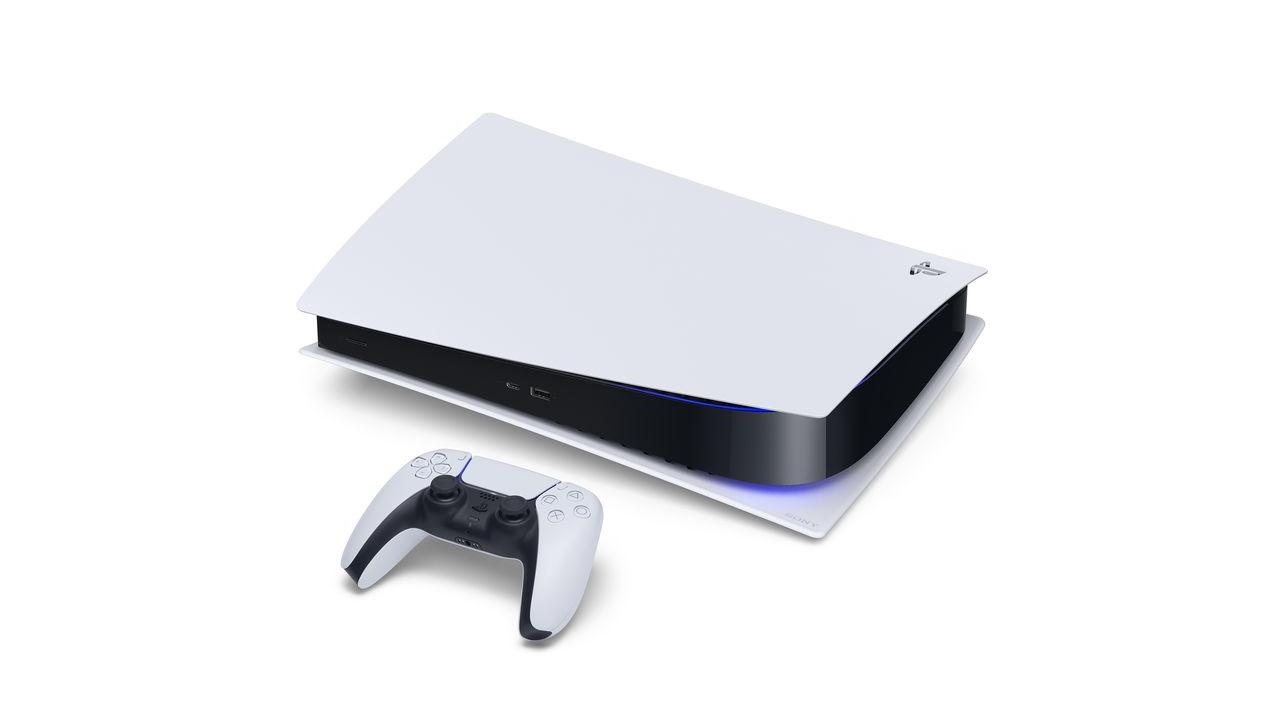
What about the PS5?
You might have a valid reason for only being able to choose between a PS4 and a PS4 Pro, but most people should also factor in the newest PS5 console into their decision-making too – if they can afford to.
That's because the PS5 really is one fantastic console. Rather than being a small step up from the PS4 (we're looking at you, PS4 Pro), this is a truly next-gen gaming experience. One which we hope will only get better as more titles arrive on the PS5 line-up.
The console is powerful and ramps up performance compared to the PS4 and PS4 Pro. When it comes to the specs, the PS5 is a technically impressive console. Including the new custom RDNA 2 GPU that can push 4K resolution at 120 frames per second, and the octa-core AMD Zen 2-based CPU with a 3.5GHz clock speed.
Add on 16GB of GDDR6 memory and the NVMe SSD and this is a machine with some seriously good-looking specs.
What's more, Sony has re-imagined almost every key part of the gaming experience – from a simpler setup and new well-thought-out user interface to a revolutionary controller and added bonuses for PS Plus members. The result is a console that we can't help but be hugely impressed with.
Check out our PS5 review and where to buy PS5 guide – though be warned that stock can be hard to get hold of.
PS4 Pro vs PS4: conclusion
The PS4 Pro is undoubtedly a substantial step up from the PS4, but 'true' 4K gaming is difficult for it to achieve without compromise.
The biggest physical difference between it and the standard PS4 visually is the addition of an extra layer, but the internals were beefed up considerably. The GPU is a great deal faster, and although the CPU is architecturally similar, it's been clocked at a faster speed.
So, should you make the upgrade from your existing PS4? The answer largely depends on if you have a 4K TV or plan on upgrading to one. If you are, then the PS4 Pro will present numerous visual benefits. If you aren't, well, there's likely isn't anything on the PS4 Pro that will be worth the extra money, at least not yet.
With the PS5 now having launched, of course, you may wish to save your cash for this true next-generation leap in power and capability. Otherwise, though, you should be able to nab some excellent prices on the PS4 and the PS4 Pro – even if they're looking a bit long in the tooth by comparison.

Rhys is TRG's Hardware Editor, and has been part of the TechRadar team for over four years. Particularly passionate about high-quality third-party controllers and headsets, Rhys strives to provide easy-to-read, informative coverage on gaming hardware of all kinds. As for the games themselves, Rhys is especially keen on fighting and racing games, as well as soulslikes and RPGs.